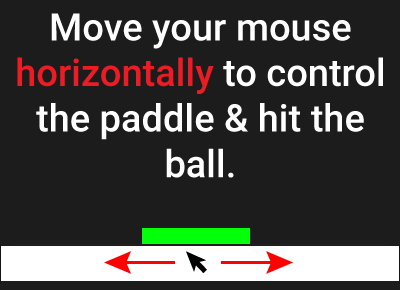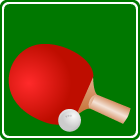


3 scores max per player; No foul language, show respect for other players, etc.
Name | Score | Date | ||
|---|---|---|---|---|
| 1 | ||||
| 2 | ||||
| 3 | ||||
| 4 | ||||
| 5 | ||||
| 6 | ||||
| 7 | ||||
| 8 | ||||
| 9 | ||||
| 10 |

Game: PONG
Aim: Break the bricks, score points
Method:
Use your mouse or tap in the white bar to move the paddle horizontally to bounce the ball up the screen. Answer questions when you break the white bricks, score big points with the yellow bricks.
Your final score is based on correct answers, bricks broken and time taken.

anonymous 🦊
"Two variables"
PONG game to practice
'Stem & leaf: mode median range' for 8th grade
8th grade / Statistics / Discrete data / Stem and leaf / Stem & leaf: mode median range
Stem and leaf diagrams: mode, median, range
A stem and leaf diagram is a way of displaying a data set that shows the range of data in tabular form. Each data point is split into two parts, often splitting the first digit (the stem) from the remaining digit or digits (the leaf). This allows for a graphical division of the data into groups based on stems, with individual data points distinguished by their leaves. Stem and leaf diagrams can also be used for decimal numbers by splitting on the decimal point.
Stem and leaf diagrams make it relatively easy to find the mode, median and range for a data set. To find the mode from a stem and leaf diagram, look for the leaf value that appears most often in one row (do not count leaves from different rows as these are not the same value). The modal value is the most common leaf within one row combined with the stem according to the rule given by the diagram key.
To find the median value in a stem and leaf diagram, you should ensure that the diagram is ordered (stem values ascending from top to bottom, leaf values ascending from left to right). Then, count all the leaves in all the rows, and divide that number + 1 by 2. So if there are 15 leaves, the median value is at position (15 + 1) / 2 = 8. Count along all the leaves to the eighth leaf and read off the value as above by combining it with the stem value. If the median position falls between two leaves, calculate the median leaf value by adding the two values and dividing by two before combining it with the stem value.
To find the range of a stem and leaf diagram, take away the smallest value (stem and leaf) from the largest value (stem and leaf).
In this topic you are asked to calculate the mode, median or range of a series of stem and leaf diagrams. You will learn how useful these diagrams are for quickly deriving these values due to the way the data is laid out. There are 6 question/answer pairs in the lessons for this topic, and an additional 10 question/answer pairs in all the games and tests.
With our Pong math game you will be practicing the topic "Stem & leaf: mode median range" from 8th grade / Statistics / Discrete data / Discrete data. The math in this game consists of 16 questions that ask you to find the mode, median and range for each of these stem and leaf diagrams.

In our version of Pong/Breakout, there are 3 types of bricks for you to break: green bricks are worth just 2 points; yellow bricks are worth a whopping 50 points; breaking white bricks, which are worth 10 points, wins you a math question from the topic you have chosen.
You start with 5 lives. If the ball goes below the paddle, you lose a life and 200 points. The game ends when you answer all 10 questions or lose all your lives.
Notes
- This version of Pong is a one player game to learn or revise math
- Our PONG for math is a scoring game - play a few times and set a personal best score!
- Addictive! You may end up trying to avoid the white bricks so that you can play for longer...
UXO * Duck shoot * The frog flies * Pong * Cat and mouse * The beetle and the bee
Rock fall * Four in a row * Sow grow * Choose or lose * Mix and match

Latest leaderboard entries: Pong




How to play PONG to practice
'Stem & leaf: mode median range' for 8th grade

- Select the PONG game from the games selection page.
- On the settings page there are brief instructions on how to play.
- Click on PLAY to enter the game screen.
- The clock starts when the bell rings.
- Move your mouse (or finger tap or drag in the white bar for touch screens) to move your paddle left and right.
- Knock the ball back up the screen to break the bricks.
- You start with 1000 points and 5 lives.
- You lose 1 point every 2 seconds.
- 200 points are deducted from your score for each life lost
- Green bricks score 2 point, yellow bricks score 50 points, white bricks score 10 points and open the question screen.
- For each question click/tap on the correct answer or enter it using the keyboard.
- Wrong answers lose you 25 points but correct answers win you 50 points.
- Continue breaking bricks and answering questions until you have cleared all the question bricks.
- The game also ends if you lose all 5 of your lives.









